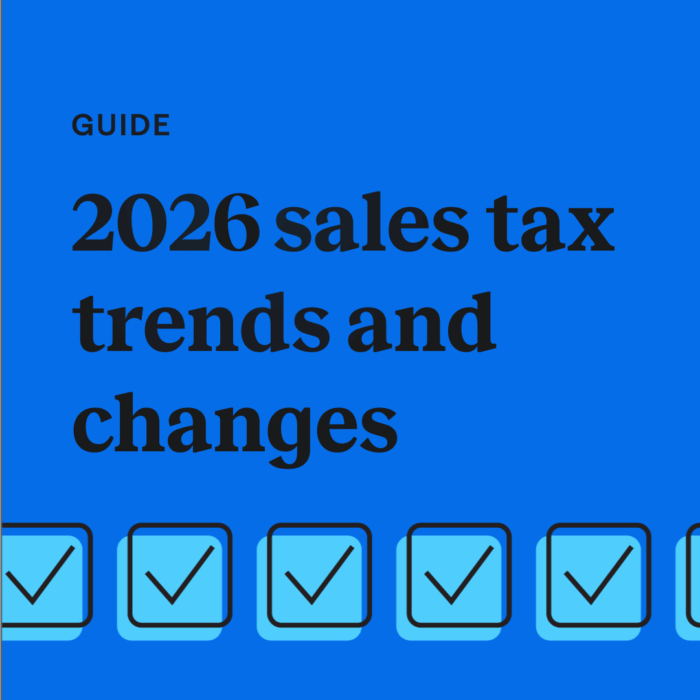Beyond Amazon: What sellers must know before going multi-channel
by December 17, 2024
There are a lot of good reasons to sell on Amazon. For starters, there’s the estimated 300 million customers the business draws to its platform every year–150 million of them devoted Prime users, who often make Amazon their preferred place to buy goods due to the free shipping they receive.
Beyond the built-in customer base, Amazon third-party sellers can take advantage of programs like Fulfillment by Amazon (FBA), which enables sellers to outsource much of their logistical work – including product storage, fulfillment and shipping as well as customer service and returns. Additionally, being a marketplace facilitator, Amazon also handles sales tax calculations and remittance, which can become a hefty burden for e-commerce businesses to handle manually. With all of these benefits in mind, some third-party sellers are content to stay on Amazon as their sole platform for the duration.
But there comes a point when, as an Amazon seller, you might ask yourself: should I expand? Should I grow beyond the Amazon ecosystem and embrace other platforms?
There’s really no right answer to this question. It all depends on the makeup of your business and how you want to evolve it.
What are your ultimate goals for your business?
If you run a micro-business with under five employees and you want to keep your operations small and tight, it may make sense for you to make Amazon your sole platform. That way you have marketing support by way of Amazon’s marketplace and the logistical support of programs like FBA.
However, if your goal is growth, you might want to consider moving to additional platforms. Although Amazon takes some of the hassles of running a business away, Amazon’s FBA program comes with substantial fees that can cut into your bottom line.
Those fees include:
- Inventory storage fees
- Fulfillment fees
- Removal order fees
- Long-term storage fees
- Unplanned service fees
- Return processing fees
If margins are already tight (which they will often need to be to compete with the competitive pricing on Amazon), those fees can have a noticeable impact on your profits. But fees aren’t the only reason for expanding beyond Amazon.
Brand building and customer loyalty
While Amazon undoubtedly gives your business a giant pool of potential customers, it also limits how you position your company and express your brand. And building your brand is key to building your business – and nurturing a customer base that will come back to you again and again. On Amazon, your products will likely show up in a feed with a whole slew of other similar products, and you’ll be offered limited ways to tell your story, to showcase what differentiates not only that product, but your company.
A multi-channel approach
Creating your own website and e-commerce storefront on a platform like WooCommerce, Squarespec or Shopify (in addition to other great platforms) gives you nearly complete control of how you tell your story. It enables you to set the right tone for your target audience through smart design, messaging and customer experience. It will allow you to set an expectation of what your company stands for. These platforms will also give you the tools to cultivate your customer base through remarketing – offering those who purchase from you additional products they might like – which isn’t possible as an Amazon seller.
You can further amplify the brand expressed on your website through social channels, and project a look, feel and tone in those posts that mirrors the brand they will experience on the website. Creating this holistic brand experience for customers, so that they can identify who you are and what you stand for no matter what channel they encounter you on, helps to build recognition. And, if they have a positive experience, it nurtures customer loyalty. New tools like Stripe’s payment links make it easier than ever for businesses to sell on social media platforms like Facebook, Twitter and Instagram.
Sales tax compliance considerations
While you may have more control and fewer fees if you sell through your own e-commerce site, you’ll also be faced with a challenge that Amazon sellers don’t need to worry quite as much about: sales tax compliance. Whereas in most states, market facilitators like Amazon, eBay, Etsy and others are required to collect and remit sales tax on behalf of their third-party sellers, when you create your own e-commerce store, you’re on the hook for all of your own tax compliance.
That means you’ll be responsible for keeping track of whether or not you need to collect sales tax in each state, also called nexus. And your online store will have to be able to calculate that sales tax, taking into account the product type as well as the tax regulations in the more than 11,000 different jurisdictions you may be selling into (including state, city, county and more). Once you’ve collected the proper amount of tax, you’ll need to determine when you need to file in each state, a frequency which varies not only by state, but also by your business’s sales volume.
When you’re selling on multiple channels, there’s one more element of compliance that can become a challenge: reporting. If, for example, you sell on Amazon, and they are collecting and remitting taxes for you (because they are a marketplace facilitator), and you also sell on your own site where you are responsible for your own sales tax, it can be hard to keep track of your nexus status in each state and your net liability when it comes time to file.
Even if you only sell on Amazon, though, you can’t ignore sales tax completely. Storing products in Amazon warehouses can constitute a “physical presence” in the states they’re located in, which could put you over the nexus thresholds in those states. That would require you to register for a sales tax license, which Amazon isn’t responsible for.
Simplifying sales tax with automation
When it comes to sales tax compliance, automation is a lifesaver. TaxJar not only automates the complete sales tax lifecycle from calculations through filing and remittance, it also gives you a single reporting dashboard where you can see all of your sales – including both marketplace facilitators like Amazon as well as your own channels. You can see when the marketplace facilitator has collected tax for you, and when your business has collected it directly. And the Nexus Insights Dashboard will show you at any given time how close your business is to reaching the threshold of having to pay sales tax in each state. TaxJar will even send you a notice when you’re approaching that nexus threshold, so you can prepare. In addition to saving you considerable time, automation will also reduce the likelihood of errors that are easy to make with manual calculations.
Ready to automate sales tax? Sign up for a free trial of TaxJar today
Defining your e-commerce strategy
Ultimately, your e-commerce strategy, and whether it’s best for you to stick to a single channel like Amazon or extend your offering to other platforms, will depend on your goals. And whether you’re running a small business or in the C-suite of a Fortune 500 company, it’s always a good idea to re-evaluate those goals periodically, and ask yourself if the strategies you’ve implemented are the right ones to achieve them.








